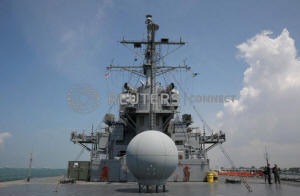Explainer: What's behind rising tensions in the South China Sea?
 Send a link to a friend
Send a link to a friend
 [July 16, 2020]
By James Pearson [July 16, 2020]
By James Pearson
HANOI (Reuters) - The United States this
week hardened its position on the South China Sea, where it has accused
China of attempting to build a "maritime empire" in the potentially
energy-rich waters, despite regional concerns.
The rivals have accused each other of stoking tension in the strategic
waterway at a time of strained relations over everything from the new
coronavirus to trade to Hong Kong.
A statement from U.S. Secretary of State Mike Pompeo on July 13 was the
first time the United States had called China's claims in the sea
unlawful and accused Beijing of a "campaign of bullying".
But heated rhetoric has also been on the rise in the region, where
Brunei, Malaysia, the Philippines, Taiwan and Vietnam challenge China's
claim to about 90% of the sea.

REGIONAL TENSIONS
Vietnam, frequently at loggerheads with China over the issue, is this
year chairing the 10-member Association of South East Asian Nations
(ASEAN).
At a June 26 summit in Hanoi, Vietnam and the Philippines - China's most
vocal challengers over the sea - warned of growing regional insecurity
amid concern that Beijing was advancing territorial claims under the
cover of the COVID-19 pandemic.
As China held military drills in the South China Sea this month, Vietnam
said Beijing's actions were "detrimental" to its relationship with the
Southeast Asian bloc. The United States simultaneously deployed two
aircraft carriers to the area for what it said were pre-planned
exercises.
In a blustery response to the Chinese drills, Philippine Foreign
Minister Teodoro Locsin said China "will be met with the severest
response, diplomatic and whatever else is appropriate", if the exercises
encroached on Philippine territory.
That followed a surprise move by President Rodrigo Duterte - who had
courted Beijing since taking office in 2016 - to suspend his decision to
scrap a two-decade-old troop deployment agreement with the United
States.
TROUBLED WATERS
China illustrates its claims with a vague, U-shaped "nine-dash line"
that includes swathes of Vietnam's exclusive economic zone, or EEZ, as
well as the Paracel Islands and Spratly Islands. It also overlaps the
EEZs of Brunei, Indonesia, Malaysia, the Philippines, Taiwan and
Vietnam.
[to top of second column]
|

A view of the flight deck of USS Blue Ridge (LCC 19), flagship of
the U.S. Navy's 7th Fleet, is seen at Changi Naval Base in Singapore
May 9, 2019. REUTERS/Edgar Su/File Photo

A tribunal at The Hague, based on a suit brought by the Philippines,
ruled in 2016 that China has no "historic title" over the waters,
and that its line was superseded by the 1982 U.N. Convention on the
Law of the Sea.
Last year, Chinese and Vietnamese vessels became embroiled in a
months-long standoff in Vietnam's EEZ where a Chinese research
vessel conducted a sweeping seismic survey of waters overlapping
Vietnamese oil blocks.
In May, the same Chinese research vessel was involved in another
month-long standoff with Malaysian ships in Malaysia's EEZ, close to
where a drillship contracted by Malaysian state oil firm Petronas
had been operating.
Chinese incursions happened 89 times between 2016 and 2019,
Malaysia's government said on Tuesday.
Indonesia has also begun to take a tougher stance. In January,
Jakarta summoned China's ambassador and dispatched air and sea
patrols after Chinese vessels entered Indonesia's EEZ around the
northern Natuna islands.

The tensions have already affected Vietnamese oil production in the
area, including operations controlled by Russia's Rosneft and
Spain's Repsol.
"We're already seeing reduced appetite for oil and gas investment in
Vietnam," said Andrew Harwood, research director at consultancy firm
Wood Mackenzie.
"Escalating tensions will not improve the situation".
(Reporting by James Pearson; Additional reporting by Karen Lema in
Manila; Editing by Matthew Tostevin and Nick Macfie)
[© 2020 Thomson Reuters. All rights
reserved.] Copyright 2020 Reuters. All rights reserved. This material may not be published,
broadcast, rewritten or redistributed.
Thompson Reuters is solely responsible for this content. |